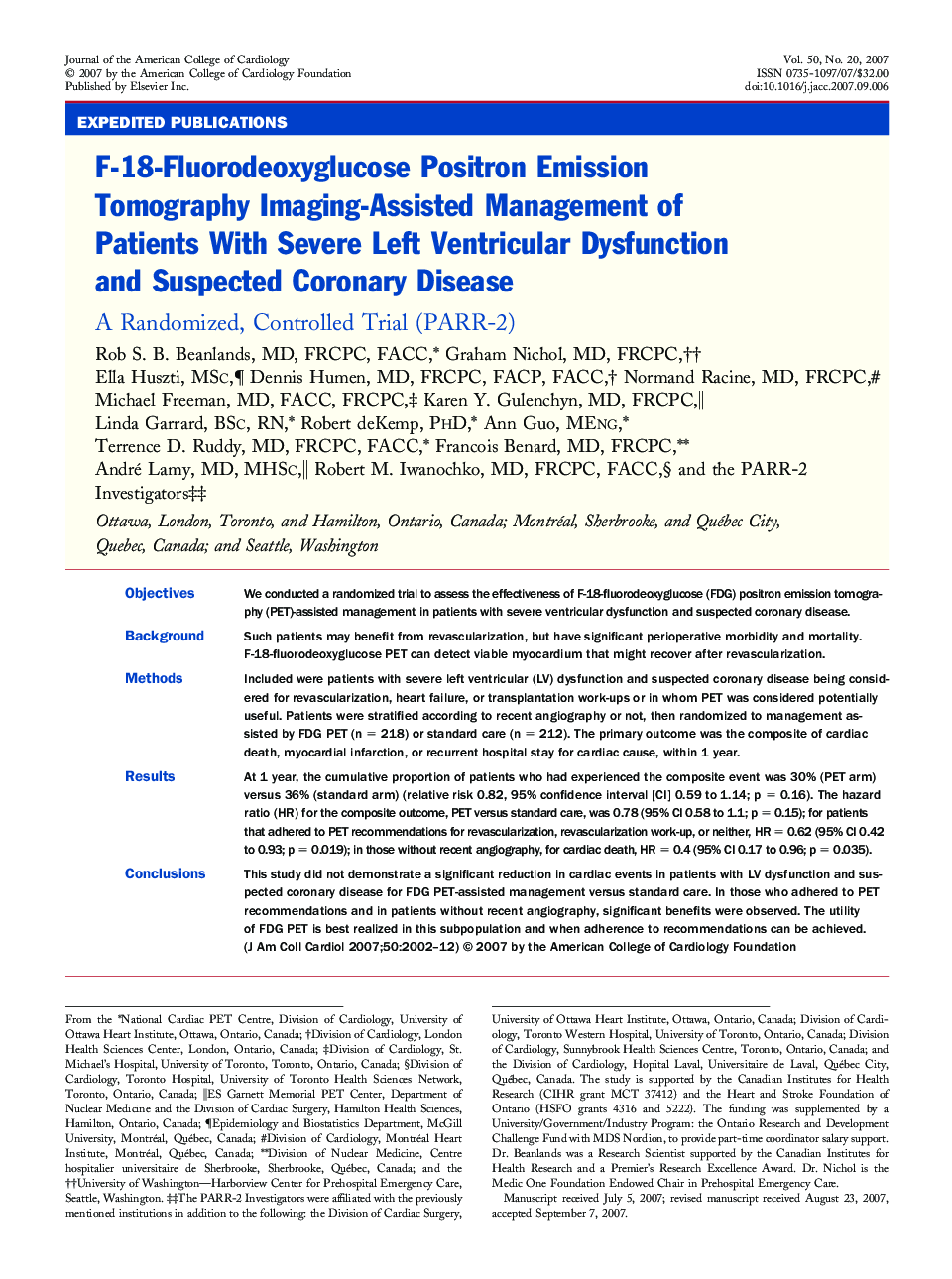| کد مقاله | کد نشریه | سال انتشار | مقاله انگلیسی | نسخه تمام متن |
|---|---|---|---|---|
| 2953006 | 1577448 | 2012 | 11 صفحه PDF | دانلود رایگان |

ObjectivesWe conducted a randomized trial to assess the effectiveness of F-18-fluorodeoxyglucose (FDG) positron emission tomography (PET)-assisted management in patients with severe ventricular dysfunction and suspected coronary disease.BackgroundSuch patients may benefit from revascularization, but have significant perioperative morbidity and mortality. F-18-fluorodeoxyglucose PET can detect viable myocardium that might recover after revascularization.MethodsIncluded were patients with severe left ventricular (LV) dysfunction and suspected coronary disease being considered for revascularization, heart failure, or transplantation work-ups or in whom PET was considered potentially useful. Patients were stratified according to recent angiography or not, then randomized to management assisted by FDG PET (n = 218) or standard care (n = 212). The primary outcome was the composite of cardiac death, myocardial infarction, or recurrent hospital stay for cardiac cause, within 1 year.ResultsAt 1 year, the cumulative proportion of patients who had experienced the composite event was 30% (PET arm) versus 36% (standard arm) (relative risk 0.82, 95% confidence interval [CI] 0.59 to 1.14; p = 0.16). The hazard ratio (HR) for the composite outcome, PET versus standard care, was 0.78 (95% CI 0.58 to 1.1; p = 0.15); for patients that adhered to PET recommendations for revascularization, revascularization work-up, or neither, HR = 0.62 (95% CI 0.42 to 0.93; p = 0.019); in those without recent angiography, for cardiac death, HR = 0.4 (95% CI 0.17 to 0.96; p = 0.035).ConclusionsThis study did not demonstrate a significant reduction in cardiac events in patients with LV dysfunction and suspected coronary disease for FDG PET-assisted management versus standard care. In those who adhered to PET recommendations and in patients without recent angiography, significant benefits were observed. The utility of FDG PET is best realized in this subpopulation and when adherence to recommendations can be achieved.
Journal: Journal of the American College of Cardiology - Volume 50, Issue 20, 13 November 2007, Pages 2002–2012